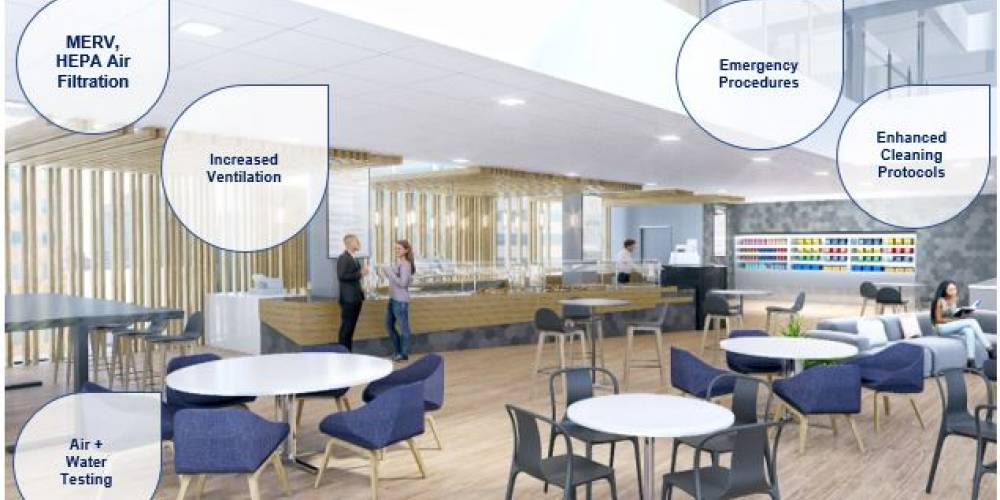
As we approach reopening and reentry of workplaces, restaurants and other venues that make up our daily life, there are opportunities to enhance the health and safety of spaces through readily available frameworks. These measures are primarily based on scientific and medical research for the short-term and broader applicability for supporting long-term health and safety.
These frameworks are aimed to empower owners and facilitators across large and small businesses with toolkits and steps to prioritize the health and safety of employees, residents, visitors and stakeholders. Bonus! These measures are complementary to projects pursuing rating systems including LEED, WELL, Fitwel, and RESET.
- LEED Safety-first pilot credits https://www.usgbc.org/about/building-re-entry-resources
- Arc’s Reentry Tool https://www.arcskoru.com/re-entry
- Fitwel Viral Response https://www.fitwel.org/viral-response-module/
- WELL Health-Safety https://www.wellcertified.com/health-safety/
Commonalities across the frameworks include Air and Water Quality; Cleaning and Sanitization Procedures; Emergency Preparedness; and Stakeholder Engagement. Some highlights are:
- Ventilation. Many indoor and outdoor sources of air pollution emit particulate matter and volatile organic compounds (VOCs) that can cause discomfort and trigger irritations. In order to maintain healthy indoor environments for building users:
- Provide sufficient ventilation required to maintain acceptable air quality.
- Increasing ventilation rates is a strategy to potentially mitigate the transmission of airborne contagious diseases.
- Proper HVAC system design and performing regular system maintenance is associated with improved ventilation performance, indoor air quality and thermal conditions.
- Air Treatment Systems. Outdoor and indoor air should be treated to remove contaminants: carbon filters remove VOCs and ozone; HEPA filters can help remove virus particles; ultraviolet germicidal irradiation “UVGI” systems can be effective to remove bacteria, viruses, molds, and other pathogens. Operationally, maintain air filtration systems to ensure optimal performance.
- Air and Water Quality and Monitoring. Clean indoor air and water is addressed in implementation; however, year over year monitoring and testing ensures that air particulates and water containments continue to meet the design criteria.
- Enhanced Cleaning and Sanitizing Procedures. Development of cleaning and disinfection plans that include instructions, training and recordkeeping. Identify preferred cleaning products that restrict hazardous ingredients that are harmful to indoor air quality.
- Emergency Preparedness Planning, Resources and Stakeholder Engagement. Assess and plan for local potential hazards, address the needs of vulnerable groups, and define the responsibilities of the emergency response team, the building response capabilities and emergency supplies. These measures aim to maintain wellbeing prior to, during and after emergencies through carefully thought-out planning and communication.
In addition to environmental performance standards, there are value-adds in also pursuing health and wellness frameworks:
- Elevated ESG performance. Strategies are designed to protect and promote physical, mental and social well-being of employees and stakeholders. Alignment with reporting frameworks such as GRESB, GRI.
- Reassuring occupants of safe and healthy reentry as we fully reopen from the pandemic.
- Portfolio roll-out. There are opportunities to streamline implementation across multiple buildings, saving time and resources.
These approaches/strategies offer relatively straightforward options for building owners, tenants, operators, and developers who want to prioritize occupant health, safety, and wellness into their operational fabric during current and future crises.
Vanderweil is helping owners, developers and institutions to pursue these frameworks of sustainable design, safety, wellbeing and resiliency. If you’re interested in learning more about the frameworks or the feasibility of implementing them on your next project, reach out to our sustainable design experts.
